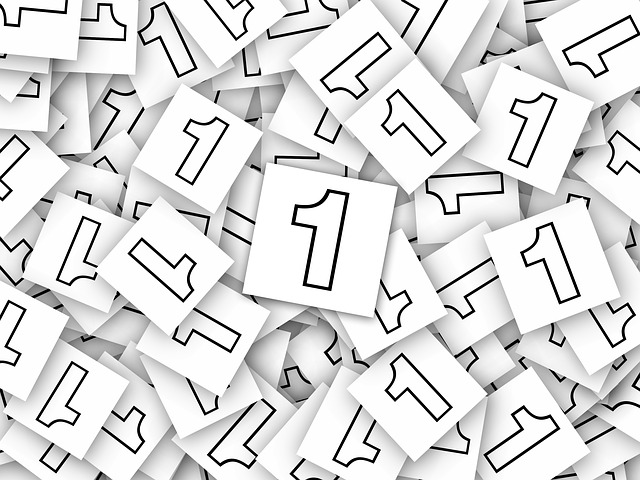100 ordinal numbers in Swedish! Posted by Stephen Maconi on Nov 3, 2015 in Swedish Language, Vocabulary
Hallå hallå! It’s finally November! For folks in the States, this means Thanksgiving season has finally started after an October filled with anticipation for Halloween. In Sweden, November is just another month, usually cold and rainy. But Christmas is closer!
Today, let’s talk about ordinal numbers. “What’s that,” you wonder? Well, put simply, it’s the form of a number you use to put things in order. In English, the first five ordinal numbers are these: first, second, third, fourth, fifth (as apposed to one, two, three, four, five).
Swedish ordinal numbers are pretty easy to master, since you never have to decline them – i.e., you never have to change their form. So let’s get started! Here are the Swedish ordinal numbers from 1 to 20:
| Swedish (short form) | Swedish (full form) | English |
| 1:a | första | first |
| 2:a | andra | second |
| 3:e | tredje | third |
| 4:e | fjärde | fourth |
| 5:e | femte | fifth |
| 6:e | sjätte | sixth |
| 7:e | sjunde | seventh |
| 8:e | åttonde | eighth |
| 9:e | nionde | ninth |
| 10:e | tionde | tenth |
| 11:e | elfte | eleventh |
| 12:e | tolfte | twelfth |
| 13:e | trettonde | thirteenth |
| 14:e | fjortonde | fourteenth |
| 15:e | femtonde | fifteenth |
| 16:e | sextonde | sixteenth |
| 17:e | sjuttonde | seventeenth |
| 18:e | artonde | eighteenth |
| 19:e | nittonde | nineteenth |
| 20:e | tjugonde | twentieth |
Not so hard, right? As you will notice, I’ve bolded sjätte (“sixth”) and sjunde (“seventh”). This is because people often get them confused, expecting “sixth” to be something like *sexte! So remember that “sixth” is sjätte and “seventh” is sjunde, or at least that sjätte is NOT sjunde.
So, what comes after tjugonde? Just as “twenty-one” becomes “twenty-first” in English, tjugo|ett becomes tjugo|första in Swedish. Similarly, tjugo|två becomes tjugo|andra, etc.
| Swedish (short form) | Swedish (full form) | English |
| 21:a | tjugoförsta | twenty-first |
| 22:a | tjugoandra | twenty-second |
| 23:e | tjugotredje | twenty-third |
| 24:e | tjugofjärde | twenty-fourth |
| 25:e | tjugofemte | twenty-fifth |
| 26:e | tjugosjätte | twenty-sixth |
| 27:e | tjugosjunde | twenty-seventh |
| 28:e | tjugoåttonde | twenty-eighth |
| 29:e | tjugonionde | twenty-ninth |
When it comes to saying “thirtieth”, “fortieth”, etc., the pattern follows tjugonde – just add -nde to the number! To say “thirty-first”, “forty-first”, etc, just follow the pattern for tjugo|första: trettio|första, fyrtio|första, etc.
| Swedish (short form) | Swedish (full form) | English |
| 30:e | trettionde | thirtieth |
| 31:a | trettioförsta (etc.) | thirty-first (etc.) |
| 40:e | fyrtionde | fortieth |
| 41:a | fyrtioförsta (etc.) | forty-first (etc.) |
| 50:e | femtionde | fiftieth |
| 51:a | femtioförsta (etc.) | fifty-first (etc.) |
| 60:e | sextionde | sixtieth |
| 61:a | sextioförsta (etc.) | sixty-first (etc.) |
| 70:e | sjuttionde | seventieth |
| 71:a | sjuttioförsta (etc.) | seventy-first (etc.) |
| 80:e | åttionde | eightieth |
| 81:a | åttioförsta (etc.) | eighty-first (etc.) |
| 90:e | nittionde | ninetieth |
| 91:a | nittioförsta (etc.) | ninety-first (etc.) |
I’ve bolded sjuttionde to point out that it looks an awful lot like sjuttonde (“seventeenth”). Make sure you pronounce (and write) the difference!
Finally, “hundredth” is hundrade (100:e).
I’m sure you’ll master these easily. Ha så kul!

Build vocabulary, practice pronunciation, and more with Transparent Language Online. Available anytime, anywhere, on any device.





Comments:
Saulo Carvalho:
Because the film “Det SJUNDE inseglet”, I have started learning swedish. And I’m loving it!
Christian:
Hej Steve! Tack så mycket för din post, men du har en lite fel. Den första listan (see what I did there?) läser “first” i alla ord.
Excuse my Swedish!
Geezzeer:
Is the English column in the first table (mostly) in error?
Otherwise, most informative!
Joan Hall:
Now I have an inkling why my Swedish friend* (speaks at least 5 languages) is so able to organize, keep things clean and neat, move through fears and get things done. That brain has the grooves to accomplish anything!
Wow! the Swedish culture has order “hard-wired” in its language, the way that the Eskimo (Inuit/Iñupiat) have at least 50 words for snow.
*Yes, sadly, living in the US I only have one Swedish friend, met while traveling abroad.
Mats:
While it’s mostly true that you don’t decline ordinals, I would like to add that “första” and “andra” do change to “förste” and “andre” in definite form for male people.
Example: “Den förste som kom i mål hette Bengt-Göran.” (Imagine a race with only male participants)
suher:
Thanks that was helpful